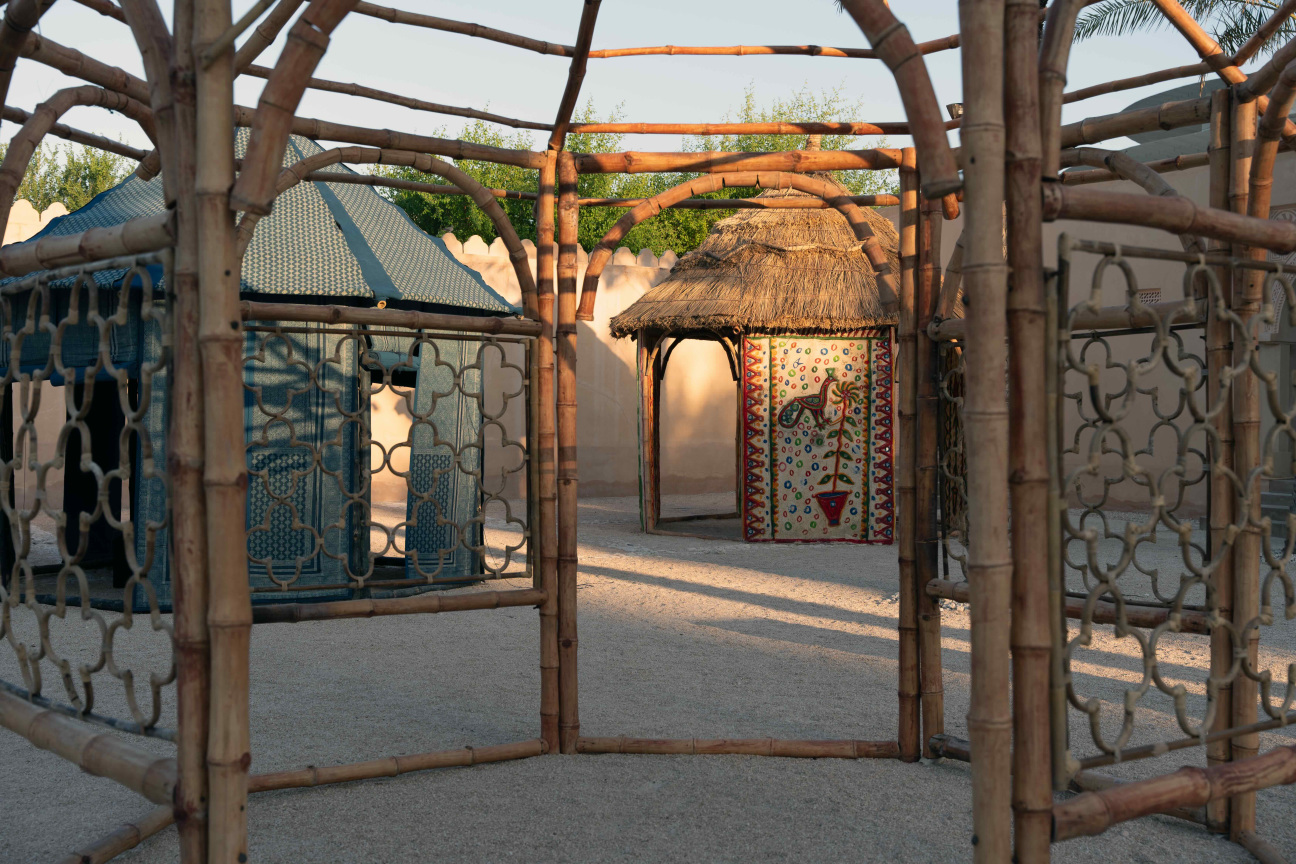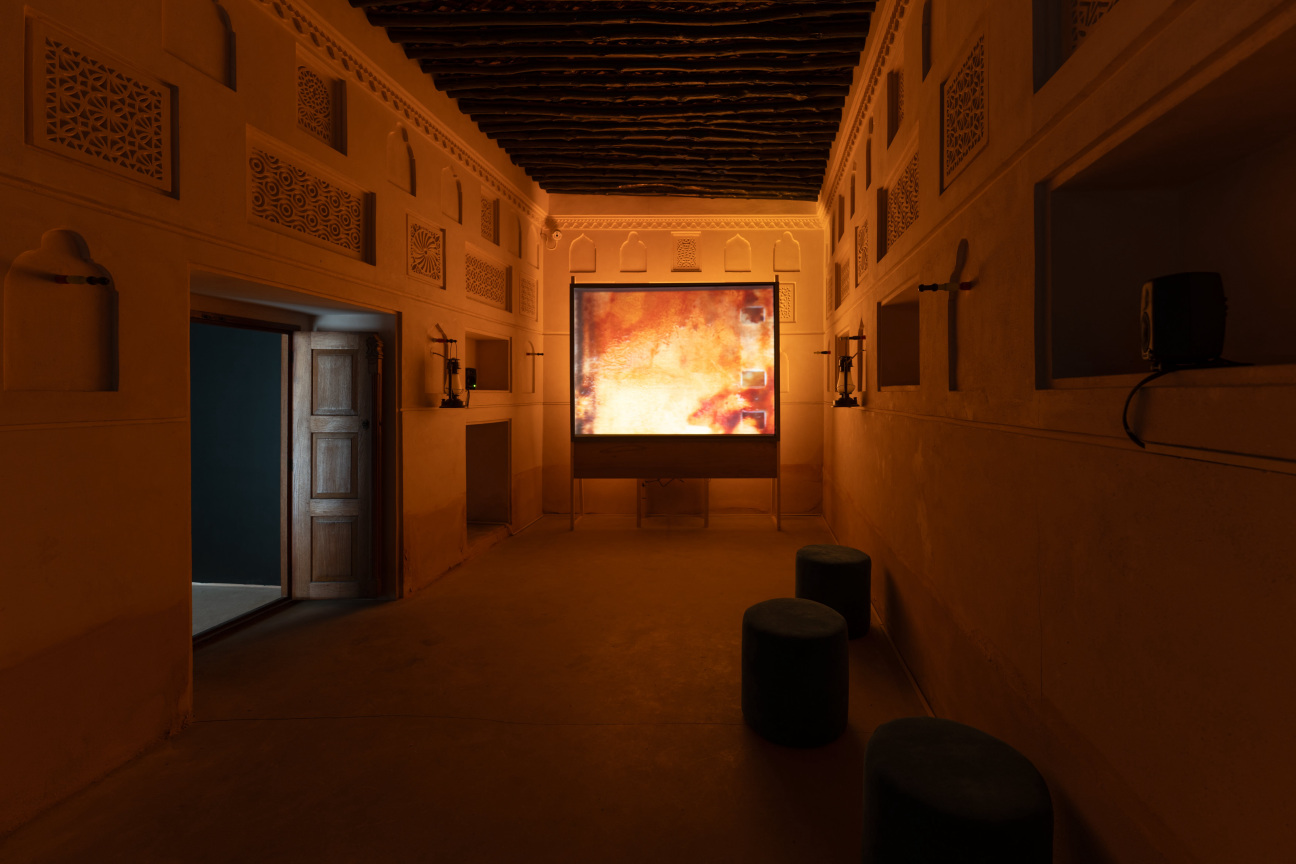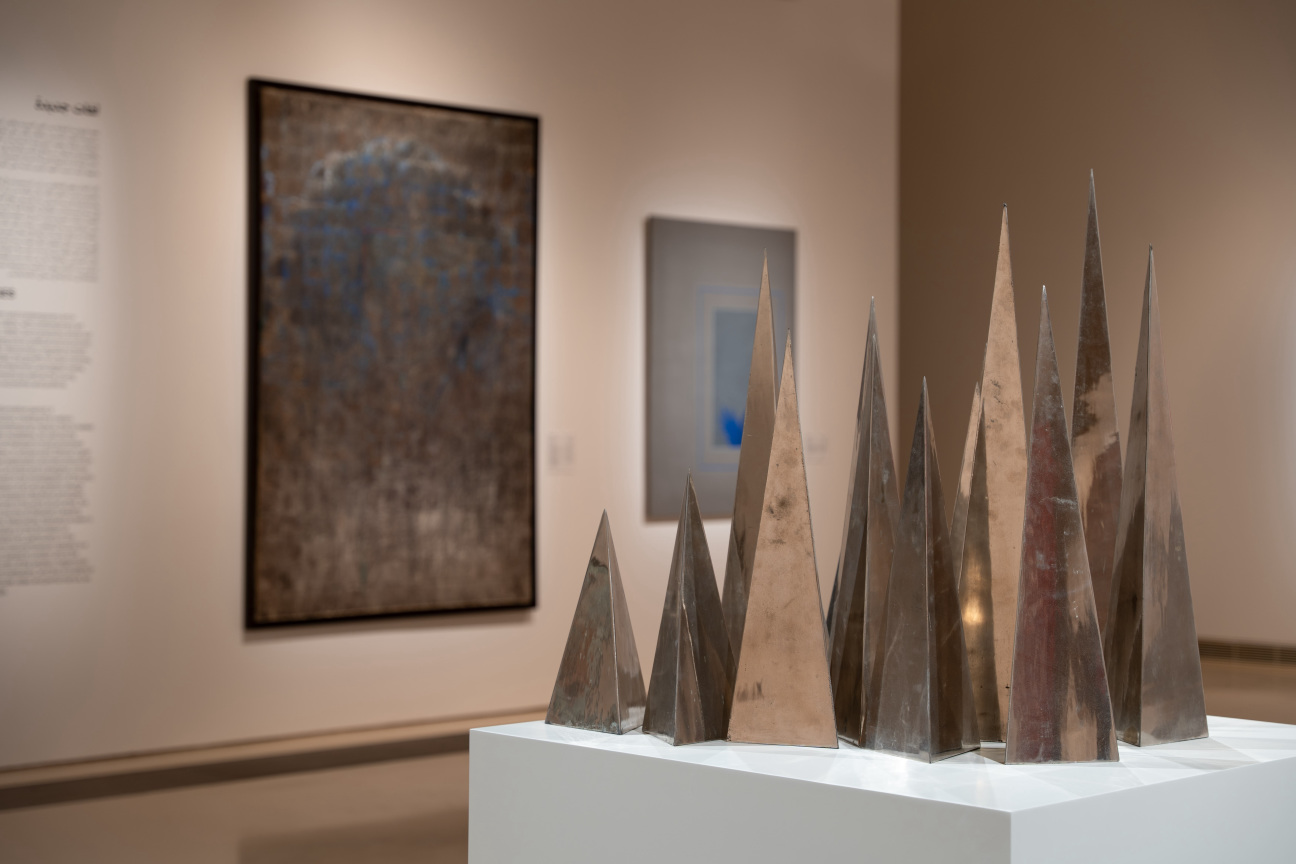
Doha's Art Mill Museum (AMM) is not officially open, but the new institution is already acting on its mission to bring international modern and contemporary art to Qatar’s capital.
The museum is whetting its future devotees' palates with “Manzar: Art and Architecture from Pakistan 1940s to Today”––one of several initiatives on view in Qatar this winter promoting the emerging art hub.

Organized in collaboration with the National Museum of Qatar, “Manzar” explores the unique nexus of art and architecture in Pakistan through 200 carefully selected works ranging across various mediums and contemporary practices. Featuring an impressively diverse roster of artists, architects, and photographers, exhibition highlights include artists such as Zahoor ul Akhlaq, Imran Mir, and Rasheed Araeen, all of whom are challenging Western art history and traditions both at home and on the international stage.
One month into the show, which is on display through Jan. 31, 2025, CULTURED sat down with two of the exhibition’s curators, Zarmeene Shah and Caroline Hancock, and Catherine Grenier, Director of Concept for the future Art Mill Museum, to talk about their inspirations and aspirations.

CULTURED: How was the exhibition title—“Manzar”—selected? What do you hope it communicates to visitors?
Zarmeene Shah: The Urdu word manzar, deliberately deployed in its singular form, can be translated in English to mean a scene, a view, a landscape, or a perspective. Originally an Arabic word, manzar entered the Persian language in the early centuries of Islam; it subsequently made its way into Urdu, a language that began to develop in North India around the 12th century and was heavily influenced by both Arabic and Persian. After the Partition in 1947, Urdu became Pakistan’s national language.
In the context of the exhibition, the word opens up a way of seeing, even as it finds a close relationship to the word nazar (“sight, looking, seeing”). In doing so, it also implicates the viewer in bearing witness to the scene.
CULTURED: How is the cultural and national development of Pakistan woven into the presentation? In other words, how are the works contextualized for viewers?
Zarmeene Shah: The exhibition presents multiplicities––of positions, narratives, pasts, and presents in the context of Pakistani art, architecture, culture, and society. It is also one of many possible configurations, approaches, and manifestations of [these things]. The curatorial framework rests on a two-fold approach: attempting to formulate a conceptual grounding that can frame the creative practices of Pakistan, while simultaneously tracing developments in society, culture, and politics, all inherently linked and often cutting across and through the decades.
CULTURED: How do you see the artwork on view in conversation with the architectural elements of the exhibition?
Zarmeene Shah: In the context of creative practices, how then do we begin to speak about Pakistan, particularly in the context of attempting to trace its trajectories, its narratives, its defining moments, and its continuing concerns since the 1940s?
In acknowledging that the country is defined as much by its histories, lands, and cultures as it is by its political, social, and economic aspirations as a modern state, we understand that these developments and trajectories do not necessarily follow a clean line. They are marked by ruptures, breaks, and divergences, which have come to define the country’s present, its future(s) and sometimes even the perceptions and readings of its past. However, artists, architects, and other cultural practitioners have attempted over the decades to define and address these conditions and states of being through speaking to and through historical and cultural practices, through the land and the water, and through personal and political formations and articulations. It is these that provide a route through which to trace this multiplicity of interconnected narratives and perspectives, often simultaneously convergent and divergent.

CULTURED: What aspects of Pakistan’s national history and artistry over the past eight decades do you believe are highlighted in the exhibition? Are there any aspects you find are regularly overlooked in the art world?
Caroline Hancock: This exhibition has set out to represent a longer timespan than has been covered previously, with a multidisciplinary approach encompassing the visual arts and architecture, stylistic diversity that defies cultural specificity, and an elastic notion of borders.
CULTURED: What was the process of working collaboratively with other curators like?
Caroline Hancock: There can never be one unique story to tell; there is no permanently authoritative canon that should not be unpicked and expanded upon. There is no single linear chronology…. but a crossroads of avenues, alleys, dead ends, streams, detours, sky jumps, and deep dives. Aurélien Lemonier and I are intensely grateful that the highly respected, Karachi-based curator, writer and educator Zarmeene Shah joined us in this challenging journey. Discussions, encounters, and research have been our precious shared tools. “Manzar” is a temporary and tentative co-formed view, and we deeply believe this will enhance the potential for future projects of many sorts.
CULTURED: How does the way Pakistani art has developed across the diaspora differ from how it has developed locally? It’s noted that “many communities in Qatar have origins in this part of the world and act as a bridge between different cultures.”
Caroline Hancock: We sought to recount an expansive notion of this place, not limited by drawn and imposed borders, but true to the porosity and transnational interconnections of cultural expressions. This corresponds to the key advice conveyed by the great artist and art historian Salima Hashmi from the outset, which immediately chimed with our chosen route and the vision of the Art Mill Museum. Neighbors and diasporas are just as center stage as the margins in Zahoor ul Akhlaq’s art, however much the final package might at first appear restrictive to a certain nationhood only.

CULTURED: What does an exhibition like this mean for the development of Qatar’s art scene?
Catherine Grenier: This exhibition is one of a series of projects designed to give visitors a foretaste of the programming that will be a feature of the future Art Mill Museum, a museum of modern and contemporary art, which will open in a few years’ time in Doha. The show aligns with many of the defining guidelines for the AMM, which will combine characteristics more normally associated respectively with museums focusing on art, society or history alone. We plan to develop a global, multidisciplinary collection for the Doha museum, featuring in a balanced manner both non-Western and Western art, an approach which will also be reflected in our programming.
Our mission is to raise awareness of modern and contemporary art in the different communities living in Qatar, and to create exhibitions and presentations for these various groups, reflecting the art and culture of the countries with which they are associated. While contributing as an institution to research in the fields of art and cultural history, as curators we will focus on ideas for exhibitions, presentations, and educational programs that allow us to address as wide and varied an audience as possible.










 in your life?
in your life?

